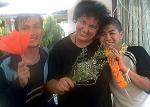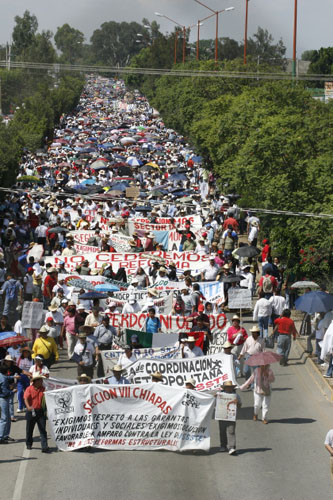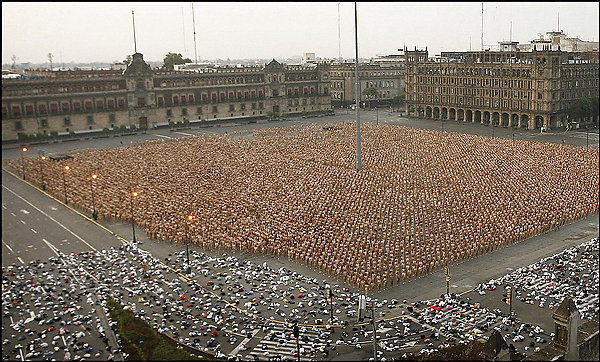El Grito in Oaxaca
September 16th, 2007A friend’s report on the grito: “My observations are that indeed the zocalo was turned into an armed camp; I counted ten policemen on each corner of Garcia Vigil, and at the Alameda, along Independencia. Given that atmosphere, I went instead to the popular grito, which was held on Carmen Alto Plazuela, with about two hundred attending. It was staged early to avoid confrontations. The event began with a calenda from Simbolos Patrias and by eight PM the plazuela was filled with people. As is common, the children recited and were applauded, followed by cries of More! More!. The kids were followed by singers who sang the struggle ballads (More! More! Otra! Otra!). Then the “cry” came, consisting of the names of the dead from the past year. The person giving the cry was a woman, and I never heard who she is, but ! I have photos. Then the national anthem, then Venceremos…it was what I expected, and am never unmoved by, a people’s event.”



